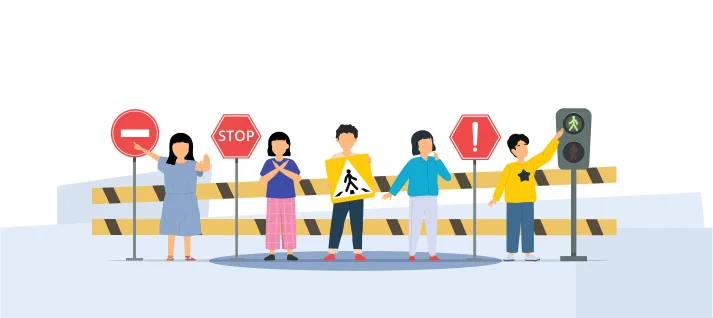What is Wheel Speed Sensor and ABS?
With increasing traffic, unpredictable road conditions, and varied terrain, driving in India demands more than just good reflexes—it requires reliable vehicle safety systems. Two unsung heroes of modern car safety are the wheel speed sensor (WSS) and the anti-lock braking system (ABS). When combined, they improve your car's braking efficiency and overall safety.
This blog discusses wheel speed sensors, ABS, their functions, and their importance, particularly on Indian roads.
.webp)
Table of Contents
What is a Wheel Speed Sensor (WSS)?
Located near each wheel of your car, the wheel speed sensor is a small but essential part. It measures the speed at which the wheels turn and relays this data to the vehicle's electronic control unit (ECU). The ECU then adjusts the brakes, traction control, and stability systems in response to this data.
If one wheel starts to spin more slowly than the others when braking, it may be on the verge of locking up. The wheel speed sensor helps the automobile react quickly and avoid losing control in this situation.
Types of Wheel Speed Sensors
-
Passive sensors: These produce a signal using a toothed wheel and a magnetic pickup. They are affordable and frequently seen in older models.
-
Active sensors: More sophisticated; even at low wheel speeds, they use digital signals to measure speed precisely.
WSS continuously provides real-time data to your car's systems, ensuring more stable handling and safer braking, particularly in less-than-ideal driving circumstances, which are common on Indian roads.
What is an Anti-lock Braking System?
A safety feature that keeps the wheels from locking up while braking hard or suddenly is the anti-lock braking system (ABS). Wheel locking causes the tires to slide and impairs steering. ABS avoids this by quickly adjusting brake pressure and letting you retain control of the car.
For good reason, ABS is now lawfully required in several nations, including India. It greatly enhances driving control during emergency stops, especially on slick or uneven roads.
Key Components of ABS
-
Wheel Speed Sensors (WSS): Track the speed of each wheel and detect any traction loss.
-
Electronic Control Unit (ECU): Processes sensor data and activates the ABS.
-
Hydraulic Valves: Use ECU signals to alter braking pressure.
-
Pump: Reapplies braking pressure once the system has released it.
ABS operates quietly in the background, prepared to assist when needed, rather than only activating during crises.
ABS Regulation in India
In India, the Ministry of Road Transport and Highways (MoRTH) requires all new two-wheelers above 125cc and most commercial vehicles to be fitted with ABS. This regulation is an aspect of a larger initiative to lower road fatalities.
How Do Wheel Speed Sensors and ABS Work Together?
Think of the ABS as your car's reflexes and the wheel speed sensor as its sense of sight. The ABS reacts when something is wrong, while the WSS tracks the movement of each wheel.
Here is a step-by-step breakdown of how they collaborate:
-
Detection: The ECU receives constant wheel speed data from WSS.
-
Analysis: If a wheel slows down too quickly, the ECU detects it as a warning that it may lock up.
-
Action: To avoid a lock, ABS valves reduce braking pressure to that wheel.
-
Restoration: The mechanism reapplies the ideal amount of braking pressure as soon as the wheel regains traction.
This cycle, which occurs multiple times per second, ensures that the car maintains its direction and grip no matter how hard you apply the brakes. This feature is actually a lifeline for Indian drivers who encounter potholes, monsoons, or sudden stops.
Conclusion
Having a thorough understanding of wheel speed sensors and ABS is crucial for every driver who is dedicated to safety. These systems are more than simply technological elements; they are vital instruments for ensuring control during critically important situations, especially on India's diverse and sometimes unpredictable roads.
WSS and ABS lower the chance of accidents; however, they can't prevent every situation. That is why you need Car Insurance to make sure you aren’t financially impacted.
Shriram Car Insurance complements your car’s safety features by providing robust protection against real-world risks. With add-ons like Roadside Assistance, Zero Depreciation, and more for customised plans, Shriram Car Insurance ensures that your safety extends beyond the mechanics. You can also enjoy cashless repairs across an extensive garage network, dedicated customer service, and paperless claims. With our Comprehensive Car Insurance plans, you can ensure your vehicle’s protection goes beyond the systems under the hood. Explore our plans today.
FAQs
1. What is the difference between a wheel speed sensor and ABS?
The ECU receives data from the wheel speed sensor, which measures the rotational speed of each wheel. This data is used by ABS to avoid wheel lock-up during braking.
2. Are ABS and WSS mandatory in Indian vehicles?
Yes, ABS is required in some vehicle types according to the Ministry of Road Transport and Highways (MoRTH), and WSS is essential for ABS operation.
3. Can a faulty WSS affect ABS performance?
Of course. ABS efficiency can be compromised by inaccurate data provided by a faulty WSS.
4. How do I know if my ABS is malfunctioning?
The majority of cars include a dashboard ABS warning light. If it's lit, you should speak with a mechanic.



 3522
3522


















